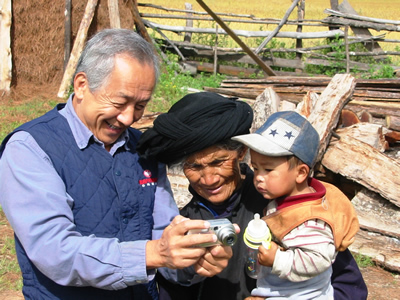|
Home / Mission Statement
Mission Statement
Our research is multi-disciplinary with an evolutionary perspective. The Centre will provide a research platform which adopts a multi-method/multi-variable approach to investigate language evolution and its impact on the developments of human mind at different levels of complexity with respect to the conceptual bases of the so-called five Os: info, cogno, techno, bio, and geno.
Language is an immensely complex system which is at the foundation of human behavior, both individually, and collectively - as members of societies. We will work closely with colleagues at Peking University in investigating the diverse languages and peoples of China toward understanding how these are related to each other structurally and historically. We are also interested in how culture, language, and literacy interact among the many ethnic groups.
Language is a mosaic constructed based upon many cognitive, memorial, and sensori-motor skills. All these skills are supported by the human brain, the most complex organ in the known universe. We will work closely with colleagues at the University System of Taiwan, using brain imaging technology, to investigate human cognition toward understanding how the brain enables all the intricacies of language and other cognitive behaviors. |
 |
All three partners of CLHC are interested in the course of language through the human life cycle – from its acquisition in infancy, to the learning of reading and writing, and foreign languages, to the loss of linguistic fluency caused by disorders and normal aging. Alongside of the pursuit of shared intellectual interests, we hope to develop methods to help in language education of native and foreign languages, in clinical diagnosis of linguistic impairments, such as aphasia, dyslexia, and dementia, and in therapy of speech-language pathology.

Major Research Directions:
- Diversity and evolution of languages in China
- language documentation, language contact, language change, language endangerment, language evolution
- Brain mechanisms underlying Chinese language processing
- identification of neural substrates with Transcranial Magnetic Stimulation (TMS), Direct Current Stimulation (DCS), Eye-tracker, Electroencephalograph (EEG), Magnetic Resonance Imaging (MRI), Magnetoencephalograph (MEG) etc.
- Medical models of language and reading impairment
- early identification of at-risk population, diagnosis, prevention & intervention
- Early childhood education and health issues
- population with hearing impairment, population with cleft palate
- Aging research
- linguistic markers of aging, development of hearing aids
|

